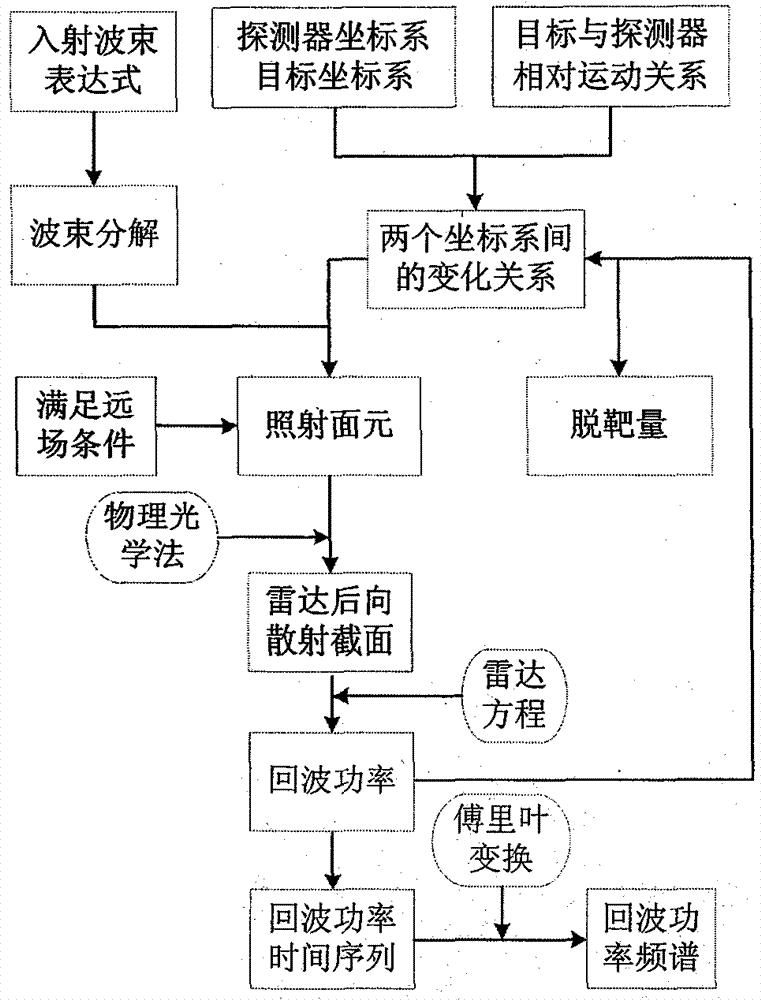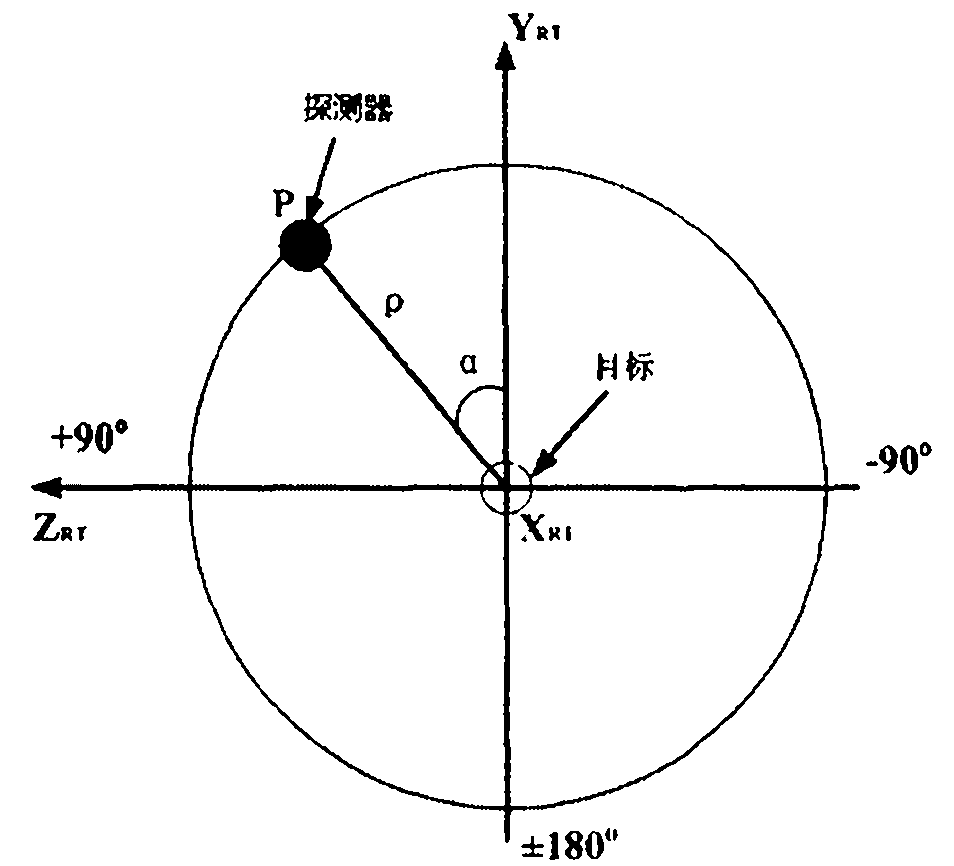Method for calculating near-field radar echo characteristics of moving object based on beam decomposition and local irradiation
A technology of moving targets and partial irradiation, applied in the direction of radio wave reflection/re-radiation, use of re-radiation, radio wave measurement system, etc., can solve problems such as complex near-field problems, only regular targets can be calculated, and memory surges, etc. achieve the effect of clear physical meaning
- Summary
- Abstract
- Description
- Claims
- Application Information
AI Technical Summary
Problems solved by technology
Method used
Image
Examples
Embodiment Construction
[0026] Below in conjunction with embodiment the present invention is further described.
[0027] refer to figure 1 , the specific implementation steps of the present invention are as follows:
[0028] Step 1, determine the radar (detector) coordinate system, the moving target coordinate system and the transformation relationship between them
[0029] Moving targets and radars (detectors) are often defined in local coordinate systems centered on each, and need to be transformed according to different requirements: for example, when determining the amount of miss and the angle of miss, the detector needs to be transformed to the center of the target. In the coordinate system of the center, the detector moves relative to the target; when it is necessary to determine the irradiation conditions of the target components when the beam irradiates the target, the target needs to be transformed into the coordinate system centered on the detector, and the target moves relative to the de...
PUM
 Login to View More
Login to View More Abstract
Description
Claims
Application Information
 Login to View More
Login to View More - R&D
- Intellectual Property
- Life Sciences
- Materials
- Tech Scout
- Unparalleled Data Quality
- Higher Quality Content
- 60% Fewer Hallucinations
Browse by: Latest US Patents, China's latest patents, Technical Efficacy Thesaurus, Application Domain, Technology Topic, Popular Technical Reports.
© 2025 PatSnap. All rights reserved.Legal|Privacy policy|Modern Slavery Act Transparency Statement|Sitemap|About US| Contact US: help@patsnap.com



